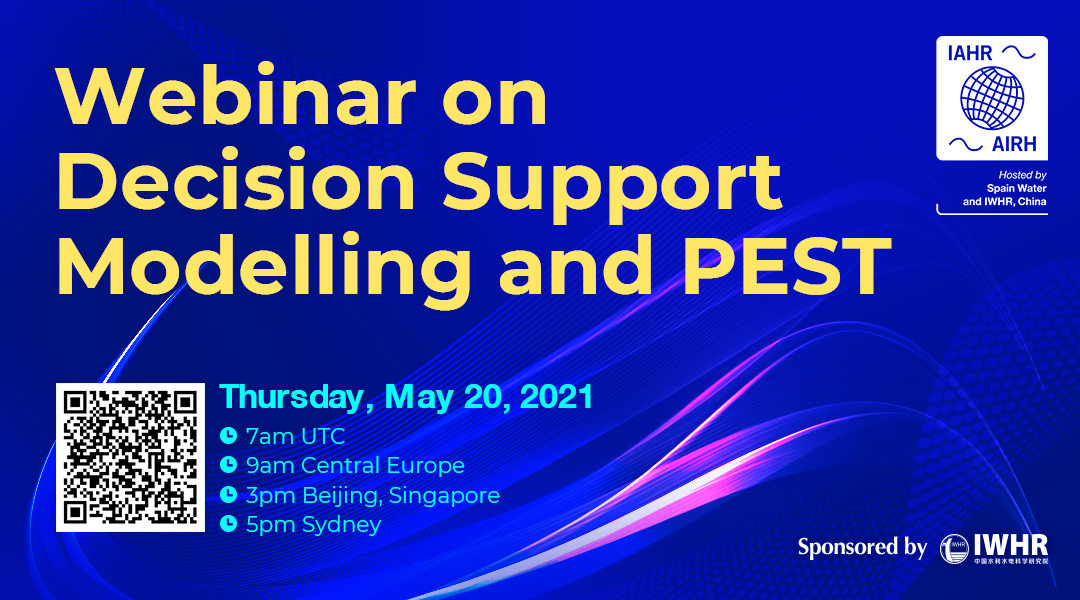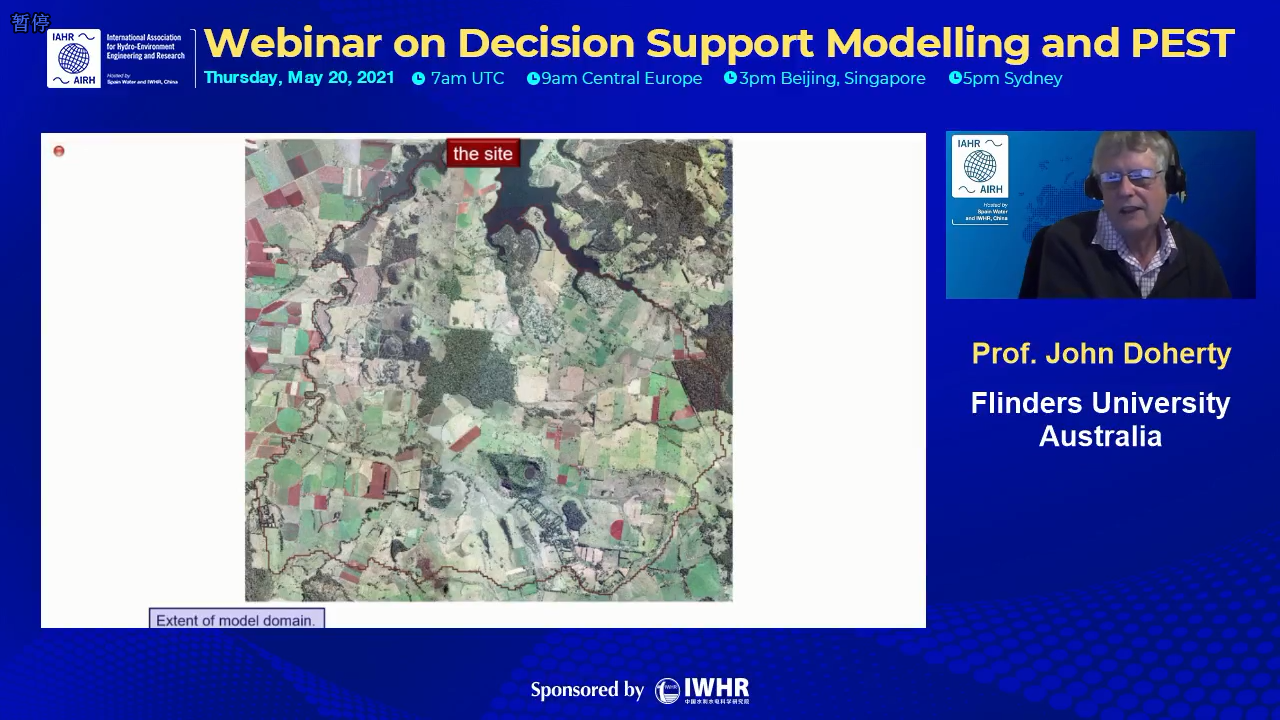Comment or ask questions in Q&A on the right under the video screen.
Visit INTRO page for more and updated details
» Requesting a Certificate of Participation (Valid only during the webinar)
» 中国水科院职工|学时登记表(会议期间有效)
IAHR Webinar on Decision Support Modelling and PEST
07:00-09:00 (UTC Time)
09:00-11:00 (Central European Summer Time, UTC+2)
17:00-19:00 (Australian Eastern Time, UTC+10)
15:00-17:00 (China Standard Time, UTC+8)
Thursday, May 20, 2021
John Doherty is the author of PEST, a software package that is widely used for groundwater model calibration and uncertainty analysis. He has worked for over 40 years in the water industry, first as an exploration geophysicist and then as a modeller. These days, as an employee of his own company, he undertakes consulting on decision-support modelling. As part of an industry-funded project administered by Flinders University, Australia, he also undertakes research, programming, education and supervision of PhD students.

This webinar is divided into two parts. Each will last for about 50 minutes. Then 30 minutes will be devoted to discussion. There will be a short break after the first part.
The first part of the webinar is somewhat philosophical in nature. It discusses the role of numerical simulation in support of environmental management. It shows why data assimilation and uncertainty analysis are essential ingredients of decision-support modelling – and that numerical simulation should be undertaken in direct support of these activities at any study site. This requires that numerical models be stable and fast-running. In fact, excessive model complexity can actually erode a model’s ability to support environmental management rather than help it. Examples of linear and nonlinear uncertainty analysis, undertaken by members of the PEST and PEST++ suites at real-world sites, are included in the talk.
The second part of the webinar discusses some implementation details of PEST and PEST++. A distinction is made between “calibration” and “history-matching”. The first searches for parameter uniqueness. This requires some form of regularisation. Singular value decomposition and Tikhonov regularisation are discussed. Tikhonov regularisation requires that expert knowledge about preferred parameterization be embodied in one or a number of covariance matrices. History-matching, on the other hand, is broader than this. Here the same covariance matrices that were previously used to attain parameter uniqueness through calibration, are used for the opposite purpose. The end-product of calibration-constrained uncertainty analysis is a suite of parameter fields that are all different, yet all allow a model to replicate the historical behaviour of a system. This webinar discusses the tools available in the PEST and PEST++ suites that can implement calibration, calibration-constrained uncertainty analysis, and development of appropriate covariance matrices.

Program
1. Introduction
Prof. Alberto Guadagnini, Politecnico di Milano, Italy
2. Decision Support Modelling and PEST
Prof. John Doherty, Flinders University, Australia
3. Panel Discussion and Q&A
--------
For more IAHR online events, please visit IAHR Webinars




